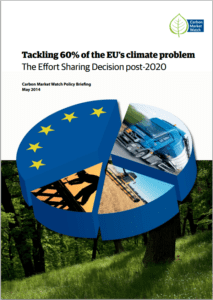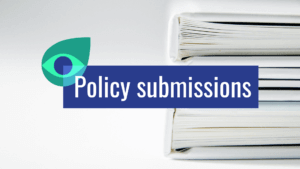Executive summary
 The Effort Sharing Decision (ESD) covers 60% of EU’s total greenhouse gas emissions and is therefore a centrepiece of Europe’s climate legislation. In contrast to the EU’s Emissions Trading Scheme (ETS) which started in 2005, the implementation of the ESD only began in 2013. Therefore, little is known about how successful it has been tackling the sectors not covered by the ETS.
The Effort Sharing Decision (ESD) covers 60% of EU’s total greenhouse gas emissions and is therefore a centrepiece of Europe’s climate legislation. In contrast to the EU’s Emissions Trading Scheme (ETS) which started in 2005, the implementation of the ESD only began in 2013. Therefore, little is known about how successful it has been tackling the sectors not covered by the ETS.
The Effort Sharing Decision establishes linear trajectory of binding emission limits for each Member State for the 2013-2020 period and its governance structure is based on annual compliance. According to the first progress reports from the European Environmental Agency (EEA) (2013), the ESD targets will be overachieved by up to 50% of the effort required. The majority of Member States have therefore not planned significant additional measures to reduce emissions beyond those that already exist.
Similar to the ETS, the ESD also offers flexibilities and trading options to make it cheaper to comply with the targets. For example, more than 50% of reduction efforts can be achieved by using international offsets. Member States have to submit reports on the amount of offsets and other trading options used in 2013 by January 2016.
The current targets, combined with the overgenerous flexibilities, are clearly too weak to drive emission reductions and delay the implementation of necessary policies for a decade. It is hence no surprise that a surplus is expected to accumulate in the ESD equal to almost 600 million tons of CO2-eq by 2020.
Given the importance of reducing emissions in the non-ETS sectors, such as transport, agriculture and buildings, the lessons learnt with the implementation of the ESD can provide valuable information for European policymakers for their deliberations regarding the 2030 policy framework for climate and energy.
Recommendations for the 2030 Effort Sharing Decision:
|
Read More:


